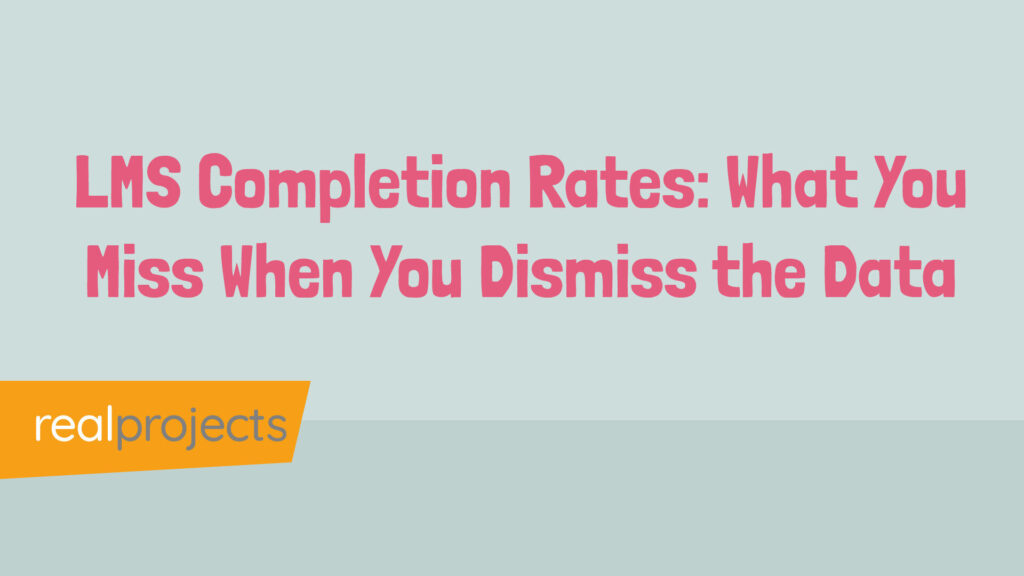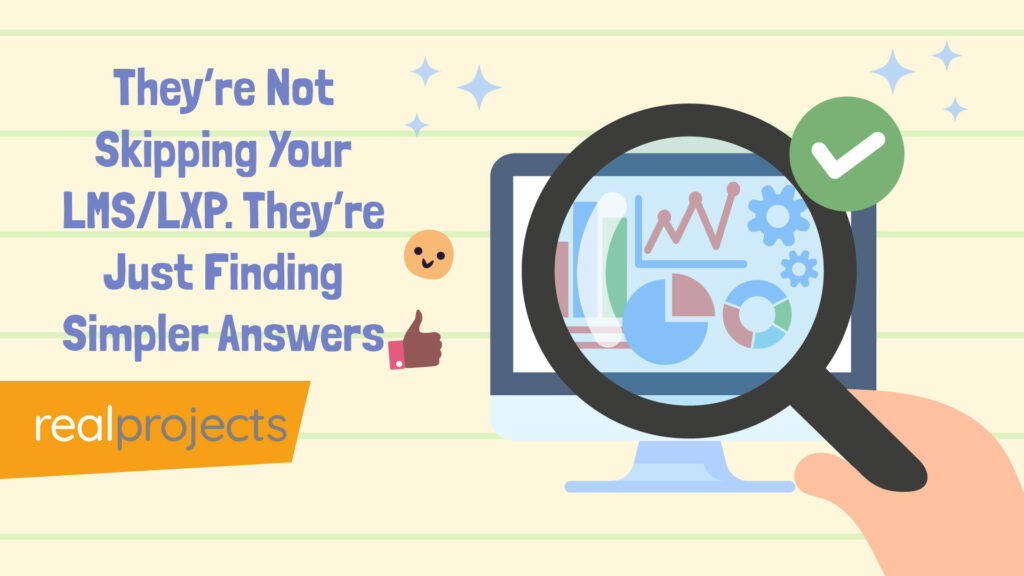Are you running L&D at a large organisation and have been asked to be more data driven? You’ve got increasing pressure across the business to deliver ‘results’, AI is now part of the business and there is a focus to be a data driven business.
Every team is asking for support. Budgets are tight. And leadership wants evidence and proof that training isn’t just “nice to have” but makes a real difference and actually has an impact.
Now imagine L&D with your organisation being seen not just as a training provider but a data centre. It becomes a Data Intelligence Center: a function that brings the business closer to its goals by revealing what skills matter, who has them, and what to do next.
That’s exactly where leading L&D teams are headed. Do you see this vision for your company?
But the gap between aspiration and execution is still wide:
- 95% of L&D organisations don’t excel at using data to align learning with business goals or improve learning effectiveness. (Deloitte)
- 69% lack the skills to ask the right questions and connect learning to business outcomes. (Deloitte)
- 22% rarely or never track progress toward strategic initiatives. (Deloitte)
That’s not just a skills problem. It’s a strategy problem.
Moving Beyond Basic Metrics
Completion metrics. Probably one of the most talked about metrics. Unfairly tagged as a vanity metric, mainly because people only use the data from it in isolation. Used in combination with other metrics and data sources it becomes invaluable.
But organisations are still tracking metrics through and still track training through completion rates, feedback scores, and hours logged. They’re easy to collect. They look impressive in a dashboard. But used in isolation, they don’t tell us much.
Completion rates aren’t worthless. But they’re only meaningful when connected to business outcomes like sales performance, customer satisfaction, or retention. Think of them as breadcrumbs. When combined with other data, they can lead to insight.
Is the problem that we rely too much on any single metric, or is it that we haven’t defined what we’re measuring in the first place? Why are we tracking this, and what does success look like in our organisation?
Define What the Business Actually Cares About
Start by identifying the three layers of KPIs:
- Business outcomes: revenue, retention, efficiency.
- Performance data: internal feedback, course ratings, NPS.
- Transaction data: completions, hours, participation.
You might have a different set of KPI’s but these are good data sets for you to think about.
Map each training initiative to these layers. Then ask: what would success look like, beyond completions?
To become data-driven, L&D teams need to collaborate better with the entire business. Speak to the CEO, CIO, and CFO. Understand what each unit defines as success, don’t work in isolation.
You need to get out into the business. Understand what the business is doing, the challenges, the successes and how you can measure the data that you need. When you get out into the business you might find that you need to measure something else.
Speak to the people within the business. You’ll understand what defines data this will help when you set you KPI data sets and your measurement criteria.
Build Your Skills Taxonomy. And Then Go Deeper
If you want to connect training to outcomes, you need a clear picture of what skills matter. That’s where a taxonomy (list of skills) and an ontology (relationships between skills) come in.
Let’s say sales and support both need customer communication. That overlap matters. So does knowing which skills are mission-critical, emerging, or shared across teams. Start with conversations, ask functional leaders what’s essential, and validate from there.
Again, this means getting out and speaking to people in the business. The people involved in the day to day work and the managers and leaders. Don’t just push out a set of surveys or polls. Get out there and speak to people. If you don’t have this capacity, then think about using microlearning techniques – not courses but pushing content out using QR codes, short emails, videos and a specific microlearning platform to explain what you are trying to capture.
Inventory What You Have, Not Just What You Teach
Running L&D as a Data Intelligence Center starts with taking stock, not just of the training on offer, but of the actual skills within the organisation.
In a recent conference, a case study was shared where a company assessed 35,000 employees across a telecom business for leadership, critical thinking, and problem-solving.
Within an hour, they had a detailed, nano-level dataset that revealed unexpected potential, including two women working in a call centre in the Philippines who, despite lacking diplomas or job history, scored exceptionally high on leadership assessments. They were later promoted into leadership roles, significantly improving their career prospects and financial stability.
This kind of insight depends on comprehensive assessment, covering technical skills, cognitive ability, personality traits, and domain knowledge. The results were consolidating in a centralised skills registry.
Tools like digital badges can help, ensuring that data from learning systems, hackathons, or external courses flows into a single, consistent format.
Organisations don’t need perfect data to start. Any dataset can drive improvement if used well. It’s about measuring, learning, and iterating. Treating L&D like a product, not a one-off initiative.You can start with an excel or google sheet, the important thing factor is that you capture the data – this is harder if you are managing 35,000 employees like in the case study, but you can make a start. You can start small at a department level.
Combine Skills Data with Business Metrics
At this level you can really start to make a difference to your business.
Match learning data with operational data: sales records, helpdesk tickets, engagement surveys, attrition rates.
You need to join up data to discover patterns:
- Which courses correlate with sales success?
- What skills reduce attrition?
- Where is someone just four skills away from a promotion?
One real-world example: a company saved $3.5M simply by identifying that employees with two or more badges had a 1.5% lower attrition rate.
A major mistake L&D teams make is measuring too much. They spend loads of time building dashboards and reports but don’t define what success looks like. Companies also spend too much time work on the analysis of the project , how will this work at huge scale. Start small and see how your data models and presentation panels work before you roll out this out to a wider group.
You can pick some small data sets, use google sheets and slides. Collect some data and work with the data to see if you can find correlations or impact within the business. You might find that the data is imperfect or messy, but you can work with this.
Too often people stop the project because the data is too difficult to collect, or the presentation data doesn’t create a nice graph.
You might do something small that has massive impact, and that’s what counts.
This is where L&D data starts to drive real business value. When you use it to solve problems that matter,like retention or underemployment you shift from activity reporting to impact reporting.
Build the Right Team and Tools
To function as a Data Intelligence Center, your L&D team will need people who can:
- Visualise and analyse data
- Communicate insights
- Align skills with business needs
You don’t need a full data science team.
But you do need roles focused on learning analytics, performance insights, and stakeholder reporting. If you want to make the most of L&D data, start by investing in the people who can interpret it.
Take some time to read about how data is being used in different sectors. Data is being widely used in sport, specifically football, NFL, Basketball. There are lots of videos, books and articles about how data is being used that will provide valuable insights.
Show Value, Not Just Activity
Finally, know your audience. Different stakeholders care about different things:
- Executives want strategic alignment and ROI
- Managers need actionable insights for their teams
- Regulators might care about completions
Tailor your reporting accordingly. Don’t overwhelm. Show how your insights drive decisions.
Key Takeaways:
- Use a layered KPI model that includes outcomes, performance, and activity
- Build a taxonomy and ontology to define and map skills
- Combine learning data with business data to uncover insights
- Use that insight to reskill, upskill, and retain talent
- Equip your team with tools and roles for analytics and storytelling
- Tailor insights to what each stakeholder cares about
L&D doesn’t have to be on the sidelines.
With the right approach, it can be the engine room of strategic decisions, the place where business goals, people potential, and L&D data converge.
Questions
Q: How does L&D add value to business?
L&D adds value by helping people build the skills the business really needs. When done well, it improves performance, reduces staff turnover, and supports growth. With the right data, L&D can show how training links directly to business goals like sales, service, or efficiency.
Q: Why is being data-driven so important?
Being data-driven helps L&D make better decisions, track real impact, and show value. Instead of guessing what works, teams use L&D data to connect learning to outcomes, like performance, retention, or promotions. It shifts L&D from activity-based to results-focused work.
Q: Why are data-driven organisations becoming more successful in business transformation?
Data-driven organisations move faster and make smarter choices. They know what skills they have, what’s missing, and what to improve. L&D data helps guide hiring, training, and career growth, making transformation easier, cheaper, and more effective across the business.



